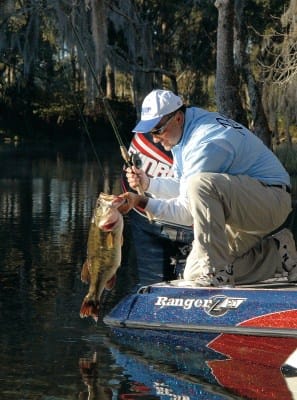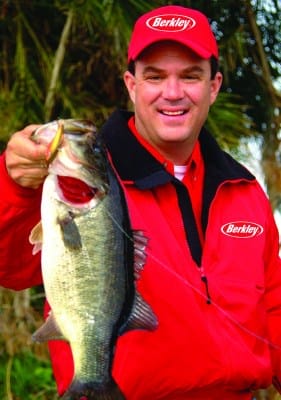
Among all the different factors that affect bass behavior, none has more impact than the seasons. Fish, especially bass, are ruled by the weather. Just like all creatures, two things drive fish: survival (food, safety) and reproduction. But the first step to catching any fish is knowing where to find them. To find fish during this time of the year, you have to have an understanding of a bass behavior during fall seasonal cycles.
While bass spend much of the summer recovering from the rigors of the spawn by schooling in deeper water and feeding on the new hatches of baitfish, the first cooling days of fall trigger a reaction in bass that begins their preparation for winter. They begin to feed heavily in an attempt to store as much energy as possible to survive the winter. Minus the heat of summertime, there is a higher level of oxygen in shallow water which draws in bait fish. Bass, one of the largest predators in any lake’s food chain, will begin to haunt these shallow areas in search of baitfish.
Bass will congregate on the edges of wind-swept points where the current holds these baitfish in shallower water. In situations like these, something like a Rattl’r crankbait can be highly effective.
As fall begins to make its way towards winter, and the water temperature drops into the mid-60 degree range, bass will look for feeder tributaries with cover that will attract baitfish. Generally these waters will be 10 feet or less, water that is warmed more quickly when the sun is out and adjacent to deeper water like a submerged channel (bass like deep water for escape routes and ambush points). Here, the bass will remain and feed heavily until the water reaches the mid-50 degree level. Target the cover in the area with a Power Jig with a PowerBait Chigger Craw trailer, especially if there is a late crawfish hatch. Bass seldom pass up a chance for a slow, easy meal, especially with winter coming.

Once winter arrives and the water temperature dips, the fish will pull up stakes and head for deeper water. But don’t miss out on the chance to target the hungry bass in the fall. Just look for feeder tributaries, cover near submerged channel beds and key on water less than 10 feet in depth to catch fall transition bass.
Berkley Pro Jay Yelas, who currently fishes the FLW Tour, is a former Bassmaster Classic winner from Corvalis, Ore.







